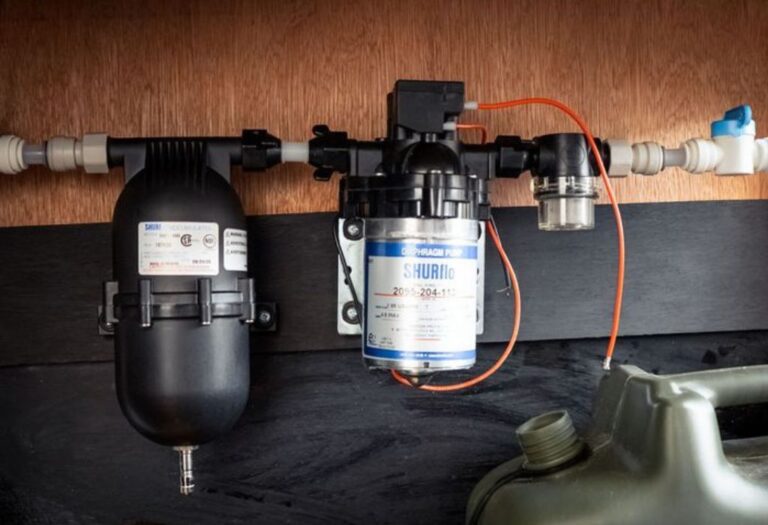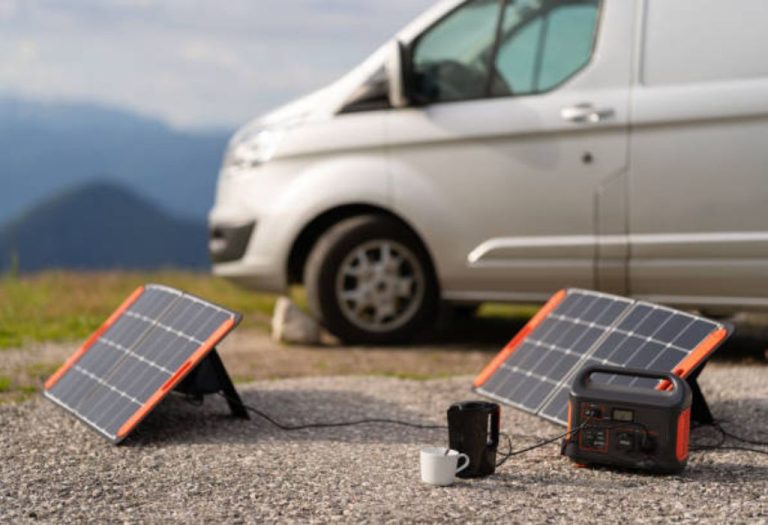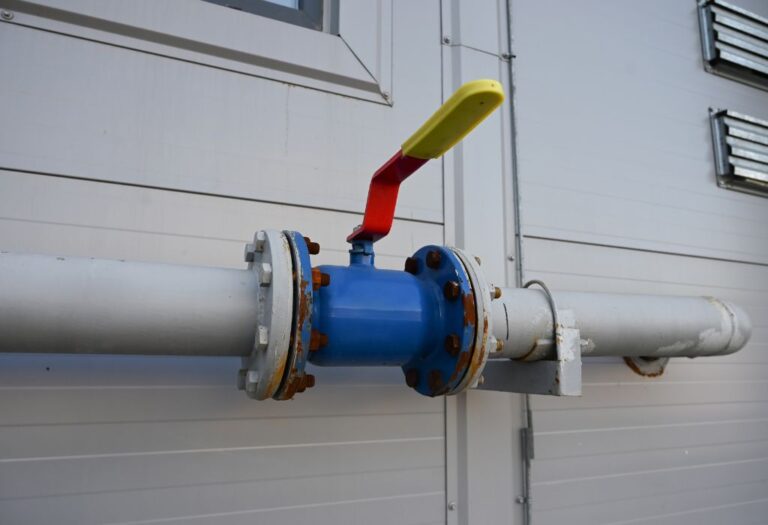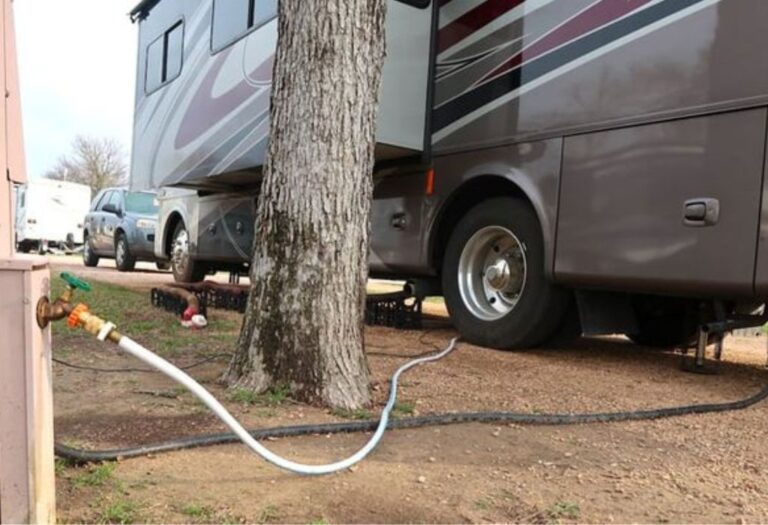What Size Wrench for RV Water Heater? Find the Right Fit
It’s early morning at a quiet campground. You reach for the faucet to rinse your hands—but nothing happens. You glance at the control panel and realize the water pump switch is off. Do you turn it on now? Or should it have been on all night?
Every RVer faces this question sooner or later. The water pump is one of the most used yet misunderstood parts of the RV plumbing system. Used correctly, it provides comfort and convenience anywhere. Used carelessly, it can drain batteries, waste water, or cause expensive leaks.
This complete guide explains when to turn on the water pump in your RV, when to turn it off, and how to use it safely for years of reliable service.
Understanding the Role of the RV Water Pump
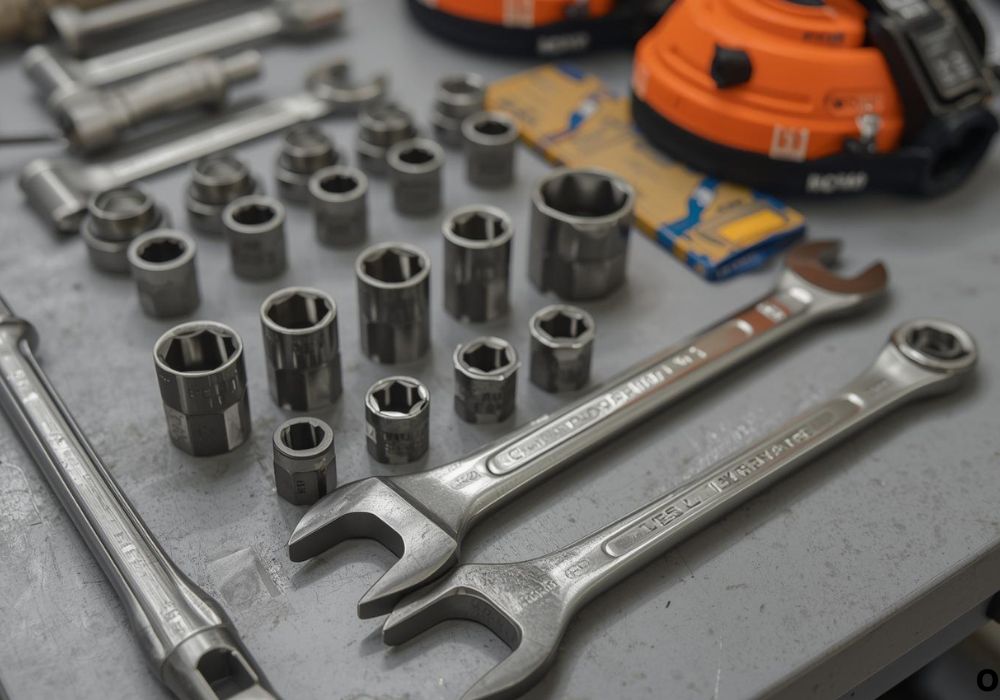
The RV water pump is the heartbeat of your fresh-water system. It draws water from the onboard fresh-water tank and pushes it through pipes to sinks, toilets, and showers.
Unlike city water systems that use constant pressure, the RV pump runs only when pressure drops—such as when you open a faucet. Then it automatically stops once the lines are full again.
Powered by your RV’s 12-volt DC battery system, it gives you running water even when you’re far from hookups. Without it, you’d have to rely entirely on external water pressure or gravity—neither of which is practical for daily living.
How an RV Water Pump Works
Most RVs use diaphragm pumps, which operate with small pistons that move water in pulses. Inside, a pressure switch senses when pressure falls below a set level and activates the motor.
As the motor spins, flexible diaphragms move back and forth, pulling water in one chamber and pushing it into another. Once pressure builds back up, the switch shuts off the pump automatically.
This on-demand design prevents continuous operation, conserving battery life and extending motor life.
When to Turn On the Water Pump in Your RV
The golden rule: turn the pump on only when using water from your tank and off whenever you have external water pressure or don’t need it.
Let’s look at each common situation in detail.
1. When Camping Without City Water Hookup
If you’re boondocking, dry camping, or staying at a location without a city water connection, your water pump is essential. It’s the only way to move water from the fresh tank to your faucets and shower.
Keep it on during normal daily use—cooking, washing hands, or flushing the toilet. When finished, turn it off before bed or when leaving the RV for the day to prevent accidents.
2. When Traveling Between Stops
Long drives mean bathroom and kitchen breaks on the go. Having your water pump on allows you to use sinks or toilets while on the road.
Just ensure the fresh-water tank is full and securely capped. Once parked, make shutting off the pump part of your arrival checklist.
3. When Filling or Testing Your Fresh-Water System
You may briefly turn on the pump to test for leaks, fill lines after sanitizing, or check faucet pressure.
It’s also needed when running cleaning solution through the system or flushing antifreeze during de-winterizing. Always monitor it closely and turn it off once the task is complete.
4. When Using Hot Water from the Onboard Heater
Your electric or propane water heater relies on the pump to push water through its tank. Without the pump running, hot water won’t circulate properly.
Whenever you plan to shower, wash dishes, or use the heater, make sure the pump is on.
5. When Using Outdoor Showers or Sprayers
If your RV has an exterior shower or utility sprayer, the pump must be on to provide water pressure.
This is especially useful when rinsing muddy shoes, cleaning gear, or washing pets during travel.
When to Turn Off the RV Water Pump
There are several cases where leaving the pump on can cause problems or unnecessary wear.
1. When Connected to City Water
Campgrounds often provide a direct city water connection. This external pressure is strong enough to supply your entire system—no pump needed.
Keeping the pump on while connected can lead to confusing back-pressure, false cycling, and even leaks around fittings or valves. Always turn it off before connecting city water.
2. When Storing or Leaving the RV Unattended
If you plan to leave your RV for several hours or store it between trips, switch off the pump and relieve system pressure.
Even a minor leak in a pressurized line can cause major flooding if the pump keeps running to compensate. Many full-timers make this a habit every time they exit the RV.
3. When Refilling or Draining Tanks
Never run the pump while filling or draining the fresh-water tank. Doing so can trap air, cause over-pressurization, or damage seals.
Wait until the tank is at least one-third full before restarting the pump to avoid running it dry.
4. During Overnight Rest
Unless you expect to use water at night, turn the pump off before sleeping. This prevents random cycling noises caused by small leaks or temperature pressure changes.
You’ll save battery power and avoid being startled awake by the hum of the motor.
Why Leaving the Pump On All the Time Is a Bad Idea

Many new RV owners assume it’s fine to leave the pump running constantly. In reality, that can be costly.
A small drip in the toilet valve or faucet causes the pump to kick on repeatedly, wearing out internal parts and draining your battery.
Worse, if a pipe bursts while you’re away, the pump can push gallons of water into your floors before you notice. Turning it off between uses is cheap insurance against disaster.
How to Turn On the Water Pump Properly
- Check your tank. Make sure there’s enough water to avoid dry running.
- Locate the switch. Most pumps have a labeled switch near the control panel or kitchen sink.
- Open a faucet. This releases air trapped in the lines.
- Flip the switch. The pump should start and then stop once pressure builds.
- Listen. A steady hum that stops after a few seconds means everything’s working normally.
If it keeps running, you may have air in the system or a small leak to address.
Testing the Water Pump for Proper Performance
After turning it on, observe how long it takes to build pressure. It should run briefly, then stop once the system is filled.
Open a faucet halfway. The pump should respond instantly and maintain a smooth flow without sputtering.
If it cycles too quickly or loses pressure, inspect the filter, valves, and hose connections for obstructions or air gaps.
Using the Pump While Driving – Is It Safe?
Yes. The pump is designed to operate safely while the RV is in motion. It allows passengers to use the restroom or sink without stopping.
Make sure all fittings are tight before departure. Turn off the pump once parked, as movement can loosen seals and increase leak risk if left pressurized.
Priming an RV Water Pump After Storage
After winter or long storage periods, your pump may need priming to remove trapped air.
- Fill the fresh-water tank completely.
- Open all faucets, including the shower.
- Turn on the pump and let it run until steady water flows.
- Close each faucet one by one.
- Listen for the pump to stop automatically.
If it fails to prime, check for loose intake hoses or cracks in the line letting air in.
Troubleshooting Common RV Water Pump Problems
Pump Runs But No Water Comes Out
The most common cause is an empty tank or closed valve. Check your water level first.
If the tank is full, inspect for air locks, debris in the filter, or loose fittings on the suction side.
Pump Cycles Randomly When Faucets Are Closed
This means the system is losing pressure somewhere. Look for small drips around faucets, toilets, or outside connections.
A failing pressure switch can also cause false starts—replace it if cleaning the contacts doesn’t help.
Pump Is Loud or Vibrates Excessively
Noise often means air trapped in the lines or unsecured mounting. Bleed air by running water for 30 seconds at each faucet.
Add rubber isolation mounts under the pump to absorb vibration.
Weak or Pulsating Water Flow
Clogged filters or kinks in hoses restrict flow. Clean the strainer and check all lines.
If your RV uses long runs of tubing, adding an accumulator tank helps even out pressure surges for a smoother stream.
Pump Doesn’t Turn On at All
Start with basics: check the fuse, battery voltage, and switch connections.
If those are fine, the pump motor or pressure sensor may have failed and need replacement.
How to Extend the Life of Your RV Water Pump
Proper care can double your pump’s lifespan.
- Clean the intake strainer every month of active use.
- Drain the system before freezing temperatures hit.
- Keep electrical connections tight and corrosion-free.
- Avoid running the pump dry, even for a few seconds.
- Sanitize the entire water system twice a year.
A little preventive maintenance prevents expensive breakdowns later.
Energy and Water Conservation Tips
Every drop of water and watt of power counts when camping off-grid.
- Turn off the pump immediately after use.
- Fix leaky faucets quickly to prevent short cycling.
- Use low-flow showerheads and aerated faucets.
- Carry a separate jug for quick hand washing.
- Take shorter showers and reuse gray water where legal.
By being mindful, you’ll extend both your water supply and battery charge during long trips.
Safety Tips When Operating the RV Water Pump
- Never run the pump dry. It can burn out the motor and seals.
- Use potable water only. Avoid contaminated sources.
- Turn off the pump before disconnecting hoses.
- Check fittings before travel. Vibrations loosen joints.
- Install a shutoff valve near the pump for quick isolation in emergencies.
Safe operation ensures you enjoy water convenience without worry.
City Water vs. Pump Pressure – Key Differences
| Feature | City Water Hookup | Water Pump System |
| Source | External connection | Onboard fresh-water tank |
| Pressure | Constant from city line | Variable, user-controlled |
| Power Use | None | Uses 12V battery |
| Ideal For | Campgrounds with hookups | Boondocking or travel |
| Risk | Overpressure if regulator missing | Leaks if left on unattended |
Understanding these differences helps you transition smoothly between systems without confusion.
Advanced Setup: Using an Accumulator Tank
Installing a pump accumulator improves water flow and reduces cycling. It stores a small reserve of pressurized water that releases instantly when you open a faucet.
This results in quieter operation, steadier pressure, and less strain on the pump motor. Many RVers consider it an essential upgrade for long-term comfort.
Diagnosing Water Pressure Fluctuations
If pressure drops suddenly or pulses, the problem may not be the pump itself.
Inspect the check valve at the city water inlet—it can stick or leak, letting air enter the system. Replace or clean it regularly.
Also, ensure your battery voltage remains above 12V. Weak power reduces pump efficiency.
Preparing Your Water Pump for Winter Storage
Before freezing weather arrives, drain the system completely. Run the pump for a few seconds to clear lines, then switch it off.
Add RV antifreeze through the system, turning the pump on briefly to distribute it through faucets and showerheads.
Label the pump switch to remind you to flush the antifreeze out before spring.
How to Replace an RV Water Pump
Most pumps are plug-and-play.
- Disconnect power and relieve pressure.
- Remove inlet and outlet hoses.
- Unscrew mounting brackets.
- Install the new pump with the same fittings.
- Reconnect wires and hoses, prime, and test for leaks.
Always match the replacement pump’s GPM and PSI ratings to your RV’s plumbing specs.
RV Pump Maintenance Checklist
| Task | Frequency |
| Clean inlet strainer | Monthly |
| Inspect wiring & fuse | Monthly |
| Sanitize system | Twice yearly |
| Check for leaks | Before every trip |
| Tighten fittings | Every 3 months |
| Winterize | Before freezing temps |
Keeping this schedule ensures your pump performs flawlessly all season.
Real-World Example: A Lesson from the Road
During a summer road trip through Arizona, an RVer left their pump on overnight while connected to city water. A loose faucet caused slow cycling until the pressure hose burst at 3 a.m., flooding half the trailer.
Had the pump been off, the damage would’ve been minimal. The story spread among campground neighbors as a reminder: always turn it off when not in use.
Small habits like this can save thousands in repairs.
Environmental Impact of Pump Usage
Efficient water use doesn’t just save your battery—it helps preserve limited water sources in remote areas.
Using the pump wisely reduces strain on campground supplies and minimizes wastewater generation. Responsible RVing protects both your rig and the places you explore.
Extended FAQ: RV Water Pump Use
Can I leave my water pump on all the time?
Only when you’re actively using water off-grid. Otherwise, switch it off to prevent leaks and battery drain.
Should I hear the pump every time I use water?
Yes, a soft hum is normal, but constant cycling means a pressure or leak issue.
What happens if the pump freezes?
Ice can crack the casing or diaphragm. Always drain it before cold storage.
How long can I run the pump continuously?
Just until pressure builds or tasks are complete—typically under a minute per use.
Is it okay to drink water that passes through the pump?
Yes, if your system is sanitized and filled with potable water.
Can a bigger pump improve flow?
Not necessarily. Too much pressure can burst fittings. Stick with manufacturer specs.
Does the pump stop automatically?
Yes, once pressure reaches its preset level. If not, the switch may be faulty.
How do I quiet a noisy pump?
Add flexible tubing, foam padding, or an accumulator tank to absorb vibrations.
Can I install a second pump?
Yes, large RVs sometimes use dual pumps for higher demand, but it requires careful pressure balancing.
How much power does it use?
About 5–10 amps when running, negligible when idle.
Should I turn off the pump before traveling?
It’s safe to leave it on for restroom access, but off when parked or stored.
What’s the average pump lifespan?
Five to ten years with routine care.
Can I rebuild a worn pump?
Yes, many have replacement diaphragm and seal kits available.
What if my pump leaks at the body?
Replace it immediately—internal cracks can’t be safely repaired.
Is it okay to use the pump and city water together?
No. Use one system at a time to avoid overpressure.
Conclusion – Smart Pump Use for Stress-Free Travels
Your RV water pump may be small, but it plays a mighty role in your comfort and convenience. Used correctly, it delivers clean, pressurized water wherever the road leads.
Remember these essentials:
- Turn it on when camping off-grid or using your onboard tank.
- Turn it off when hooked to city water, during storage, or while away.
- Maintain it with regular cleaning, inspections, and winterization.
By respecting these simple habits, you’ll enjoy consistent pressure, prevent leaks, and extend your pump’s lifespan.
A well-cared-for water pump ensures every shower, meal, and drink on the road feels as effortless as home—keeping your adventures smooth, safe, and worry-free.
I’m David R. Coleman, the founder, lead writer, and lifelong tool enthusiast behind GarageToolPro.com. With years of experience in automotive repair, woodworking, and home DIY projects, I created this platform to share practical tips, detailed tool reviews, and step-by-step guides that help mechanics, hobbyists, and homeowners get the job done right the first time.

